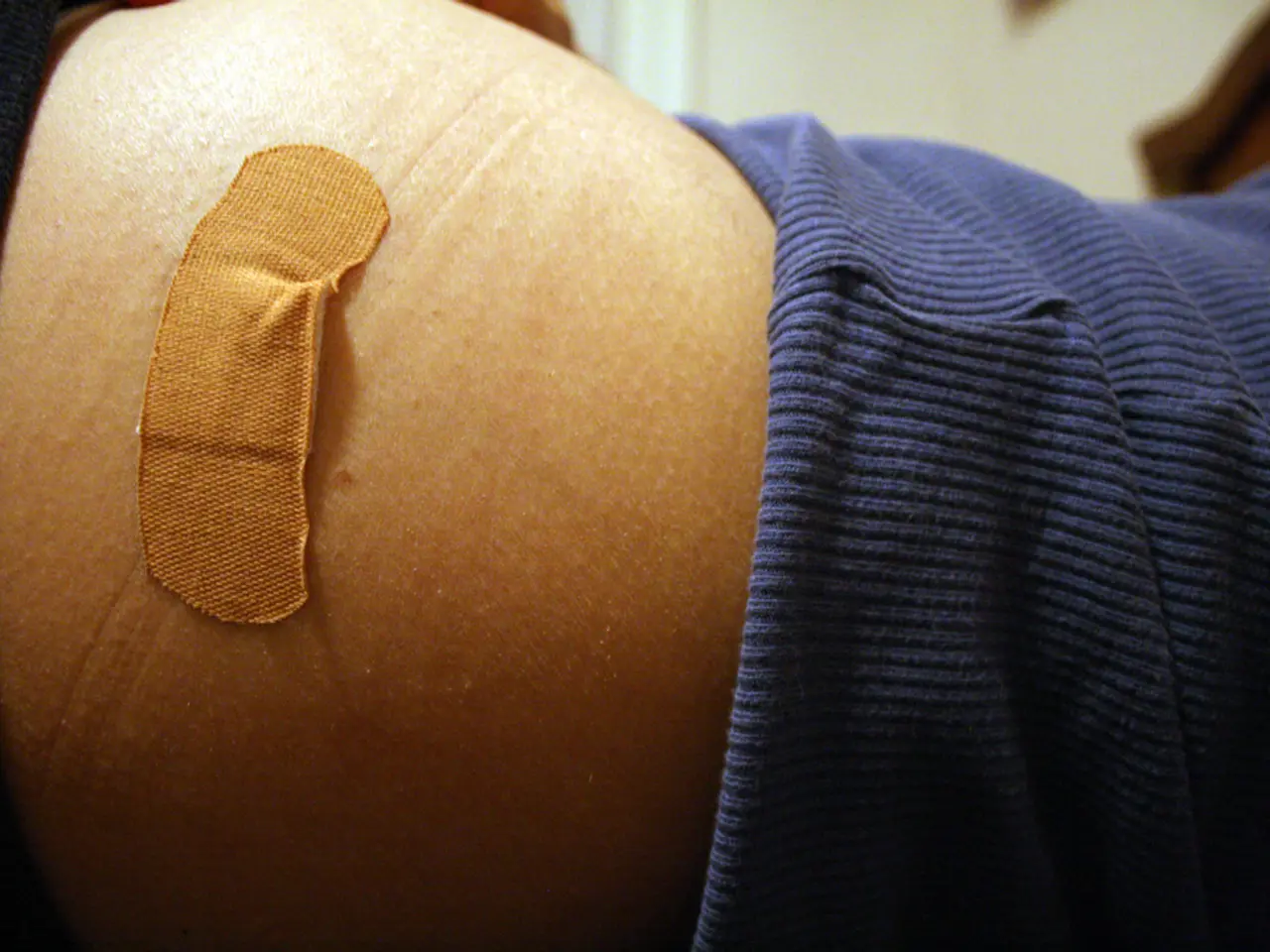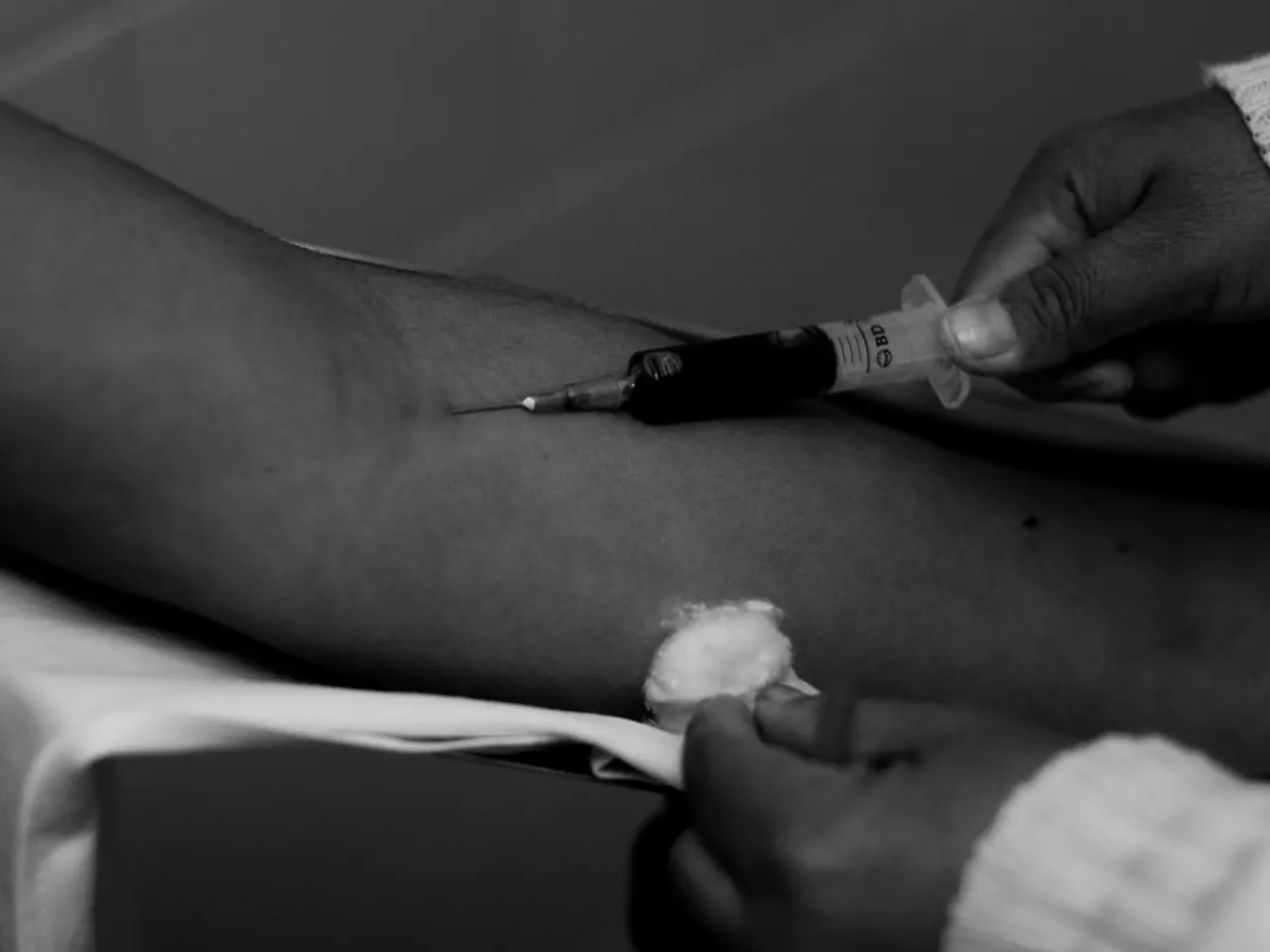Treatment, Home Care, and Prevention Strategies for Blood Clots
In the realm of health and wellness, understanding the management of blood clots is essential for maintaining a healthy lifestyle. Blood clots, while a vital process that prevents excessive bleeding following an injury, can pose a significant risk when they form unnecessarily or fail to dissolve properly.
A key aspect of managing blood clots is the long-term use of anticoagulant medications, such as warfarin, heparin, and newer oral anticoagulants. These drugs, often referred to as blood thinners, play a crucial role in preventing recurrent clots by reducing the body's ability to form new clots and preventing existing clots from growing larger[1][3].
In some cases, more invasive procedures like surgical thrombectomy may be necessary. During a thrombectomy, a surgeon makes a cut above the blood clot, removes it, and may insert a small tube or "stent" to keep the blood vessel open[4]. This procedure is typically reserved for severe cases where clots have caused significant damage.
Compression stockings are another valuable tool in the management of blood clots. These garments are designed to improve circulation and prevent blood from pooling in the deep veins of the legs, thereby reducing the risk of clot formation[2][4]. They are often used after surgery or during prolonged periods of immobility, such as long flights. Graduated compression stockings, which provide more pressure at the ankle than at the knee, are preferred[2].
Regular exercise, such as walking, is beneficial for improving circulation and reducing the risk of future clots. It's advisable to start slowly and gradually increase intensity based on symptoms and medical advice[1][2]. Maintaining a healthy weight, avoiding smoking, and managing hypertension are also important lifestyle modifications to reduce clotting risks[4].
Staying hydrated and elevating the affected limb can help improve circulation and reduce swelling[4]. Regular check-ups with healthcare providers are crucial to monitor for any signs of clots or complications and adjust treatment plans as needed[3]. Being aware of symptoms such as pain, swelling, or redness in the legs, and seeking medical attention promptly if they occur, is vital for early intervention[1][3].
It's worth noting that blood clots are one of the most preventable types of blood conditions[5]. Incomplete dissolution of a blood clot can lead to the clot traveling through the circulatory system and restricting blood supply to a vital organ. In such cases, vena cava filters may be used to prevent clots from passing through the vena cava, a large vein in the abdomen[6].
Thrombolytics are drugs that dissolve blood clots. They are usually only recommended for people who have very large clots or clots that do not resolve with anticoagulant treatment, or for people with persistent and debilitating PTS[7]. Direct oral anticoagulant medications (DOACs), which directly target the specific proteins responsible for blood clotting, are less likely to cause bleeding and to interact with foods, supplements, and other medications, but tend to be more expensive[7].
In conclusion, a comprehensive approach combining medical treatment, lifestyle adjustments, and home care techniques helps manage blood clotting disorders effectively. By understanding the various strategies available, individuals can take proactive steps towards preventing and managing blood clots, ensuring a healthier future.
References: [1] American Heart Association. (2021). Blood Clots. Retrieved from https://www.heart.org/en/health-topics/blood-clots [2] Mayo Clinic. (2021). Compression stockings for deep vein thrombosis. Retrieved from https://www.mayoclinic.org/diseases-conditions/deep-vein-thrombosis/in-depth/compression-stockings/art-20047187 [3] National Heart, Lung, and Blood Institute. (2021). Blood Clots. Retrieved from https://www.nhlbi.nih.gov/health-topics/blood-clots [4] National Health Service (UK). (2021). Deep vein thrombosis (DVT). Retrieved from https://www.nhs.uk/conditions/deep-vein-thrombosis/ [5] American Society of Hematology. (2021). Blood Clots. Retrieved from https://www.hematology.org/patients/diseases/blood-clots [6] National Institutes of Health. (2021). Vena Cava Filters. Retrieved from https://www.ncbi.nlm.nih.gov/books/NBK532917/ [7] American College of Chest Physicians. (2021). Antithrombotic Therapy for VTE Disease. Retrieved from https://www.chestnet.org/guidelines/antithrombotic-therapy-for-vte-disease
In the realm of health and wellness, understanding the management of chronic diseases, such as diabetes, bipolar disease, multiple sclerosis, Alzheimer's, obesity, and HIV, is equally essential for maintaining a healthy lifestyle. These chronic diseases, while challenging to live with, can be managed through a holistic approach combining medical treatment, lifestyle modifications, and home care techniques.
For instance, people with diabetes need to monitor blood glucose levels, maintain a balanced diet, exercise regularly, and take prescribed medications. People with bipolar disease require regular therapy, medication management, and stress management techniques to control symptoms.
Individuals with inflammatory bowel diseases like ulcerative colitis and Crohn's disease may need immunosuppressant medications, biologics, or even surgery. Psoriasis and psoriatic arthritis patients often benefit from topical treatments, light therapy, systemic medications, and lifestyle modifications.
People with sleep disorders like migraine may need preventive medications, relaxation techniques, and sleep hygiene practices. For those preparing for surgeries (prep), medical professionals may recommend certain tests, fasting guidelines, and pain management strategies.
Chronic kidney disease requires careful management of fluids and electrolytes, blood pressure control, and sometimes dialysis. Lung conditions like asthma and NSCLC (non-small cell lung cancer) may necessitate inhalers, medications, oxygen therapy, and surgery in severe cases.
Cardiovascular health is critical in managing conditions like hemophilia, which affects blood clotting. In these cases, regular infusions of clotting factor, surgery, and lifestyle modifications are crucial. Skin conditions like AQ (amnio Q) or HOME (homeostasis-modulating enzyme) may be treated with topical creams, oral medications, or light therapy.
Science continues to advance our understanding of these chronic diseases, leading to new treatments and predictive models. For example, research into the role of genetics in diseases like Alzheimer's and cancer is ongoing.
In conclusion, a comprehensive approach is vital in managing chronic diseases and chronic kidney disease effectively. By understanding the various strategies available, individuals can take proactive steps towards preventing and managing their conditions, ensuring a healthier future. It's always advisable to consult with healthcare professionals for personalized guidance in managing any health condition or chronic disease.




